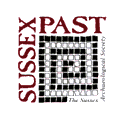Sussex Archaeological Collections: Relating to the history and antiquities of the counties of East and West Sussex
Sussex Archaeological Society, 2000. (updated 2022) https://doi.org/10.5284/1000334. How to cite using this DOI
Data copyright © Sussex Archaeological Society unless otherwise stated
This work is licensed under the ADS Terms of Use and Access.
Primary contact
Jaime
Kaminski
Sussex Archaeological Society
Barbican House
169 High Street
Lewes
BN8 1YE
Resource identifiers
- ADS Collection: 285
- DOI:https://doi.org/10.5284/1000334
- How to cite using this DOI
A multi-period site at Eden Park (former Toddington Nurseries), Littlehampton, West Sussex
by MICHAEL DINWIDDY
with contributions from Alistair Barclay, Philippa Bradley, Kayt Marter Brown, Nicholas Cooke, Jessica M. Grimm, Matt Leivers, Lorraine Mepham and Ruth Pelling.
Illustrations by Rob Goller
Excavations on land formerly occupied by Toddington Nurseries, Littlehampton, revealed evidence for activity dating from the Mesolithic to the post-medieval period. Some residual Mesolithic and Neolithic flint was recovered, as well as a few sherds of Neolithic pottery. A possible Neolithic ditch was found during the evaluation, although this area was not subsequently excavated, so its form and significance are unclear. Middle and Late Bronze Age occupation comprised a hollow way, waterholes/wells and a possible roundhouse with associated spreads of domestic rubbish. Two Neolithic axes deposited in the terminal of a Bronze Age ditch may have been curated. Another deposit, apparently placed deliberately, consisted of a near-complete pot filled with burnt stones, a quern fragment and worked flint. Intensive cereal production during the Romano-British period is indicated by environmental remains recovered from a double-ditched field system and pits. It is suggested that the field system was part of a wider agricultural complex associated with the estate of the nearby Angmering Roman villa. Residual Early to Middle Saxon pottery was found although, as no features of this date were identified, its significance is uncertain. Some Saxo-Norman pottery (10-12th century date) was recovered but the bulk of the assemblage dates to the 13th-14th centuries, when a trackway was created and a field system established.





